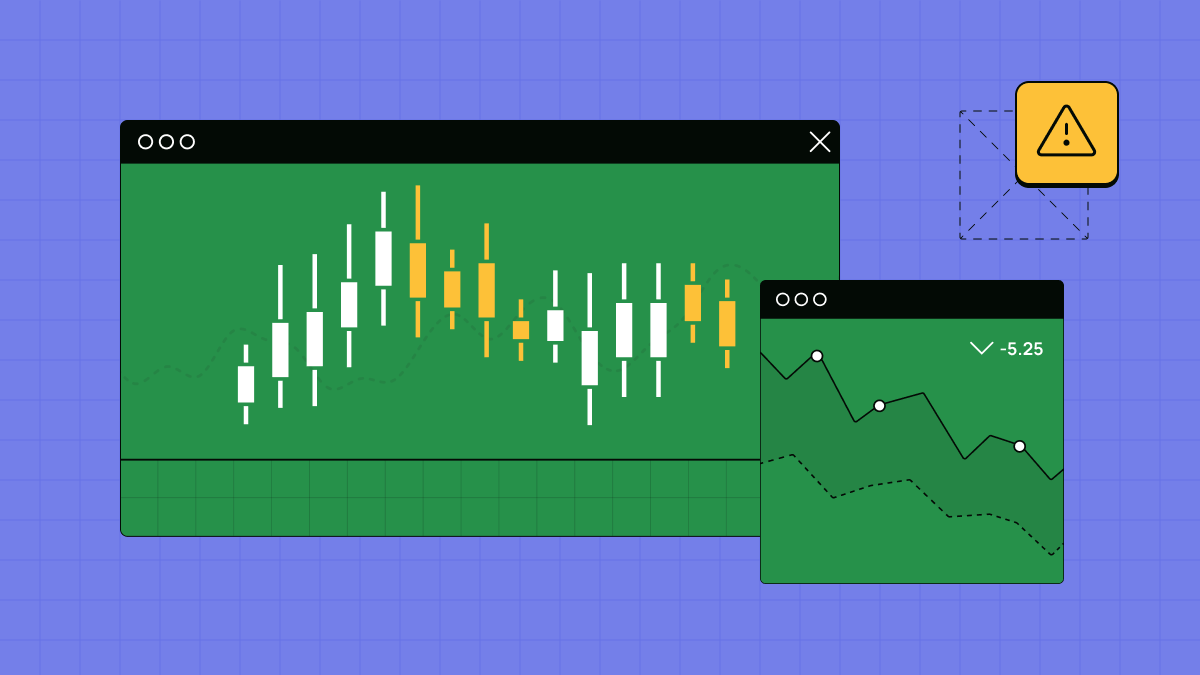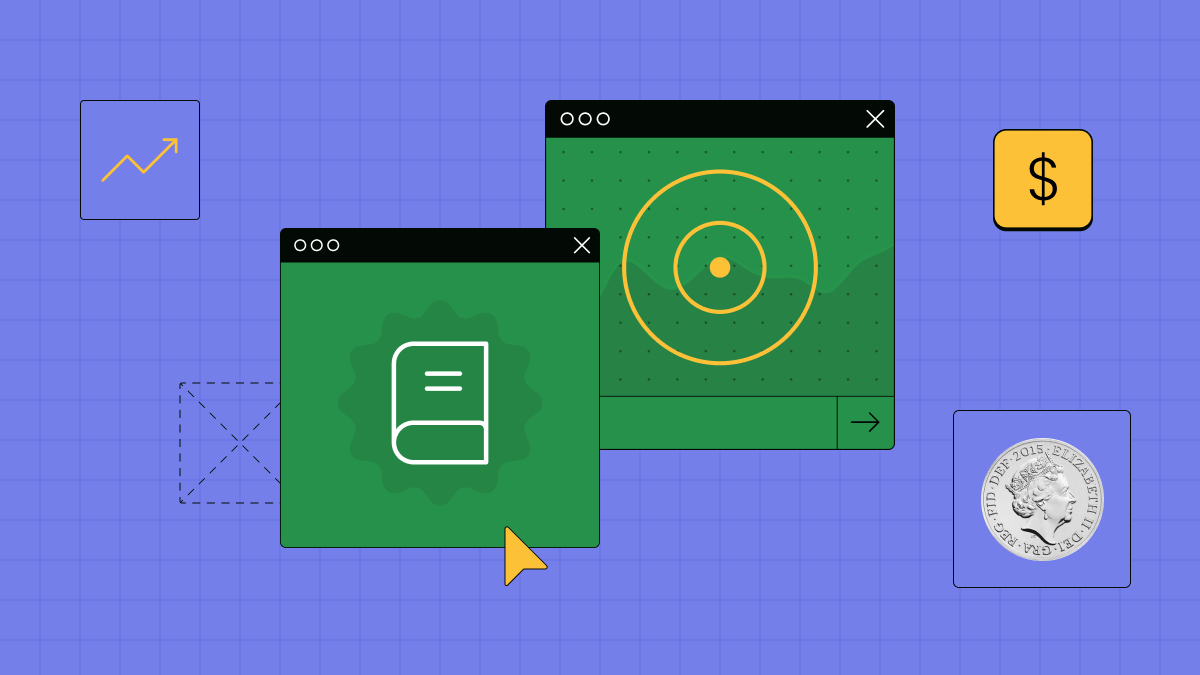Aspek penting lainnya adalah memahami bagaimana menghitung rasio leverage. Rumus berikut ini umum digunakan dan mudah diingat:
L = A/M
L adalah leverage, M adalah jumlah margin dan A adalah jumlah trade.
Akan tetapi, perhitungan jumlah margin M perlu lebih diperhatikan oleh trader.
M = A/L
Contoh:
Trader ingin membeli 1 lot EURUSD, yang bernilai $100.000, dengan leverage 1:100.
M = $100.000 / 100 = $1.000
Berarti seorang trader harus memiliki $1.000 dari margin bebas.
Persyaratan margin forex akan tergantung pada rasio leverage yang dipilih trader, ukuran lot, dan instrumennya. Izinkan kami menunjukkan kepada Anda contoh leverage dan margin FBS yang diperlukan untuk dapat menggunakannya:
| Leverage | Persyaratan margin | Persyaratan margin untuk satu lot EURUSD (atau €100.000) |
| 1:50 | 2% | $2.000,00 |
| 1: 100 | 1% | $1.000,00 |
| 1: 200 | 0,5% | $500.00 |
| 1: 500 | 0,2% | $200.00 |
| 1: 1000 | 0,01% | $10.00 |
| 1: 2000 | 0,05% | $5.00 |
| 1:3000 | 0,033333333% atau 1/30% | $3,3333333 atau $3 1∕30 |

Risiko Trading dengan Leverage
Leverage sebenarnya berpotensi memperbesar keuntungan atau kerugian Anda dengan besaran yang sama. Semakin besar leverage, semakin tinggi risiko yang diasumsikan trader.
Mari kita ilustrasikan hal ini dengan sebuah contoh. Trader A dan Trader B memiliki modal trading sebesar $1.000. Setelah beberapa analisis, keduanya setuju bahwa EURUSD menemukan titik terendah dan seharusnya akan naik. Oleh karena itu, keduanya membeli EURUSD di 1,00000.
Trader A memilih leverage 1:100 pada trade tersebut dengan membeli $100.000 (1 lot) USD (100 x $1.000). Pada saat yang sama, Trader B memilih leverage 1:10 pada trade tersebut dengan membeli $1.000 (0,1 lot) senilai EURUSD (10 x $1.000).
Nilai poin untuk EURUSD bernilai $1.
Jika EURUSD turun ke 0,99500, harga berarti turun 500 poin. Dalam kasus ini, Trader A kehilangan:500 poin x $1 x 1 lot = $500 atau 50% dari modal.
Pada saat yang sama, Trader B akan kehilangan:
500 poin x $1 x 0,1 lot = $50 atau 5% dari modal.
Tabel berikut menunjukkan bagaimana akun trading kedua trader tersebut dibandingkan setelah mengalami kerugian 500 poin.
| Trader A | Trader B |
| Modal Trading | $1.000 | $1.000 |
| Leverage yang Digunakan | 1:100 | 1:10 |
| Total Nilai Transaksi | $100.000 | $10.000 |
| Dalam Kasus Kehilangan 500 poin | $500 | $50 |
| % Kerugian Modal Trading | 50% | 5% |
| % dari Sisa Modal Trading | 50% | 95% |
Contoh ini juga menyoroti pentingnya manajemen risiko karena menggunakan 100% modal trading Anda sebagai margin untuk trade tunggal meningkatkan risiko kerugian.

Kelebihan dan Kekurangan dari Trading dengan Leverage
Kelebihan Trading dengan Leverage
Peningkatan Modal. Leverage meningkatkan modal yang tersedia untuk diinvestasikan di berbagai pasar. Misalnya, dengan leverage 100:1, Anda secara efektif memiliki kendali sebesar $100.000 dalam modal trading hanya dengan $1.000, yang berarti Anda dapat mengalokasikan jumlah yang berarti ke berbagai posisi trade dalam portofolio Anda.
Pinjaman Tanpa Bunga. Leverage adalah pinjaman yang diberikan oleh broker Anda untuk memungkinkan Anda mengambil posisi yang lebih besar di pasar. Namun, ‘pinjaman’ tidak disertai kewajiban apa pun dalam bentuk bunga atau komisi, dan Anda dapat menggunakannya dengan cara apa pun yang Anda inginkan saat trading.
Memitigasi Terhadap Volatilitas Rendah. Perubahan harga pasar biasanya terjadi pada siklus volatilitas tinggi dan rendah, yang berarti bahwa periode volatilitas rendah dapat sangat membuat frustasi bagi para trader karena tindakan harga yang kecil. Untungnya, dengan trading dengan leverage, trader berpotensi mendapatkan keuntungan yang lebih besar bahkan pada saat-saat volatilitas rendah ini.
Memperdagangkan Pasar Premium. Leverage memungkinkan trader retail biasa untuk memperdagangkan beberapa instrumen mahal, yang tidak mampu dibeli oleh trader saat menggunakan modal mereka sendiri.
Kelemahan Trading dengan Leverage
Kerugian yang Diperbesar. Risiko terbesar saat trading dengan leverage adalah memperbesar kerugian saat pasar bertentangan dengan Anda. Leverage mungkin memerlukan pengeluaran modal yang minimal, tetapi kerugiannya bisa sangat besar karena hasil trading didasarkan pada ukuran posisi total yang Anda kendalikan.
Risiko Margin Call. ‘Margin Call’ terjadi ketika kerugian mengambang melampaui margin yang Anda gunakan. Karena leverage memperbesar kerugian, akan selalu ada risiko ‘margin call’ ketika Anda memiliki posisi trading terbuka di pasar keuangan yang cepat dan dinamis.
Pasar Manakah yang Dapat Anda Perdagangkan Menggunakan Leverage?
Trading Forex dengan Leverage
Trading Forex melibatkan pembelian dan penjualan mata uang asing di seluruh pasar global. Rasio leverage Forex mulai relatif tinggi dibandingkan dengan pasar lain di sekitar 50:1, yang berarti bahwa ada peningkatan peluang untung atau rugi, tergantung bagaimana Anda melihatnya.
Trader Forex memantau pergerakan mata uang dalam poin, yang merupakan perubahan terkecil dalam harga mata uang. Gerakan-gerakan ini hanya sepersekian sen. Sebagai contoh, ketika pasangan mata uang seperti GBPUSD bergerak 1000 poin dari 1,95000 ke 1,96000, artinya hanya ada pergerakan 1 sen dalam nilai tukar.
Oleh karena itu, transaksi mata uang harus dilakukan dalam jumlah yang cukup besar, yang memungkinkan pergerakan harga setiap menit ini diterjemahkan menjadi keuntungan yang lebih besar. Itulah mengapa hasil trading di pasar Forex diperbesar melalui leverage. Ketika Anda berurusan dengan jumlah seperti $100.000, perubahan kecil pada harga mata uang dapat menghasilkan keuntungan atau kerugian yang signifikan.
Saham dan indeks (CFD) dengan Leverage
Kontrak untuk perbedaan atau contract for difference (CFD) adalah kontrak antara pembeli dan penjual yang menetapkan bahwa pembeli harus membayar penjual selisih antara nilai aset saat ini dan nilainya pada waktu kontrak. CFD memungkinkan trader dan investor memperoleh keuntungan dari pergerakan harga tanpa memiliki aset dasar, yang berarti trader tidak akan mendapatkan dividen untuk saham yang Anda beli. Nilai kontrak CFD tidak mempertimbangkan nilai dasar aset: hanya perubahan harga antara trade masuk (entry) dan keluar (exit). Selain itu, kabar terbaik tentang CFD adalah instrumen ini memberikan leverage yang lebih tinggi dibandingkan trading tradisional.
Komoditas dengan Leverage
Menggunakan leverage jauh lebih umum dilakukan pada trading komoditas dibandingkan pada trading saham. Komoditas cenderung merupakan investasi jangka pendek, berbeda dengan saham dan aset pasar lainnya di mana membeli dan menahan untuk jangka panjang lebih umum dilakukan.
Ditambah lagi, Anda memiliki lebih banyak waktu untuk melakukan trading dengan komoditas karena pasar buka 24/5. Dengan saham, Anda melakukan trading selama jam kerja reguler, ketika bursa saham tersedia.
Secara keseluruhan, trading komoditas dianggap berisiko lebih tinggi dan lebih spekulatif daripada trading saham, tetapi juga dapat menghasilkan keuntungan yang lebih besar.
Pertanyaan tentang Leverage dalam Trading
Apakah Trading dengan Leverage Aman?
Walaupun leverage dapat meningkatkan pengembalian, ada pula kekurangannya: jika trade tidak berhasil, hal tersebut dapat meningkatkan potensi risiko dan kerugian investasi.
Apakah Trading dengan Leverage Layak Dilakukan?
Trading dengan leverage bisa efektif karena memungkinkan investor dengan lebih sedikit uang tunai meningkatkan kekuatan trading mereka, dan juga meningkatkan pengembalian mereka dari investasi yang sukses.
Instrumen mana yang diizinkan untuk diperdagangkan dengan leverage?
Dengan FBS, Anda dapat trading mata uang, logam, energi, saham, indeks, dan bahkan mata uang crypto dengan leverage. Leverage tertinggi yang diizinkan tergantung pada jenis akun dan instrumen trading.
Apakah Trading dengan Leverage Halal dalam Islam?
Ya, trading dengan leverage halal dalam Islam. Leverage tidak lebih dari menggunakan hutang untuk membeli sekuritas atau menerapkan strategi investasi. Oleh karena itu, investasi yang digunakan trader untuk menggunakan leverage dalam platform trading harus sesuai dengan Syariah. Secara keseluruhan, trading dengan leverage sangat dapat diterima dalam Islam.
Kesimpulan
Tidak perlu takut dengan leverage setelah Anda mempelajari cara mengelolanya. Siapa pun dapat menggunakan leverage dengan sukses dan menguntungkan dengan mengikuti manajemen yang tepat. Seperti instrumen tajam lainnya, leverage harus ditangani dengan hati-hati. Setelah Anda belajar melakukan ini, Anda tidak perlu khawatir.
Jumlah leverage yang lebih kecil yang diterapkan pada setiap trade memungkinkan trader memiliki lebih banyak ruang bernapas dengan menetapkan order Stop Loss yang lebih luas namun masuk akal dan menghindari kerugian modal yang lebih tinggi. Trade dengan leverage tinggi dapat dengan cepat menghabiskan akun trading jika bertentangan dengan Anda, karena Anda akan mengalami kerugian yang lebih signifikan karena ukuran lot yang lebih besar. Ingatlah bahwa leverage itu fleksibel dan dapat disesuaikan dengan kebutuhan setiap trader.


